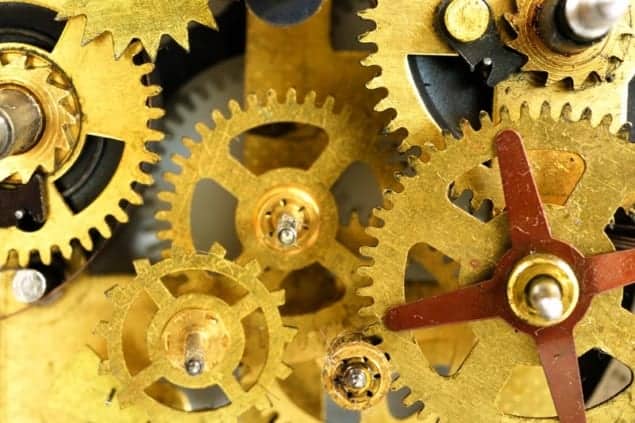
Physicists in the Netherlands have built a heat engine that might be the tiniest ever created. Based on “piezoresistive” silicon, and smaller than a typical biological cell, the engine could find applications in watch mechanisms or as a mechanical sensor.
Engines come in a variety of sizes. The smallest include biological engines such as the flagella that bacteria use for locomotion, which are driven by chemical reactions, or manmade electrostatic engines, which drive ions with electric fields.
But heat engines, which usually rely on the expansion and contraction of liquids or gas, are trickier to downscale. As the devices get smaller, engineers find it harder to design structures that can handle the high pressures and fluid velocities required for a reasonable power output. The efficiency also tends to decrease, because it requires large temperature differences as given by the famous Carnot heat-engine equations. For these reasons, liquid- or gas-driven heat engines rarely get smaller than around 107 µm3.
Driven by stress
In a paper published today in Nature Physics, however, Peter Steeneken and colleagues at NXP Semiconductors in Eindhoven easily overcome this threshold with a heat engine driven by the movement of a solid – in particular, a piezoresistive mass of crystalline silicon. Piezoresistive materials are unique in that their electrical resistance changes with applied stress: when a piezoresistive material is compressed, its resistance increases, and when it expands, its resistance decreases.
The tiny engine consists of a flat resonator of crystalline silicon, 1125 µm3 in size, with two small parallel beams, 0.34 µm3 in size, at one end – rather like a tuning fork with a heavy base. Both beams are anchored such that the compression or extension of one beam, the “engine” beam, heated by a DC current of just over one milliamp, bends the entire device up or down.
The key to the device’s operation is an interplay between the engine beam’s temperature, compression and resistance. When it is compressed (device bent up) its resistance is greatest, and this resistance, owing to the DC current, increases the temperature. But the increased temperature makes the engine beam expand (device bent down), which lowers the resistance and hence lowers the temperature. The low temperature again makes the engine beam compressed, and the process thereon repeats in an oscillatory motion of over 1.2 MHz.
“If the volume of the engine beam is taken, this is the smallest heat engine I know of,” says Steeneken. “[But] if the resonator is considered part of the heat engine, it is probably not the smallest in the world.”
A timely breakthrough
Steeneken thinks the device could replace the quartz oscillators and electronic amplifiers used in clocks and wristwatches, because, he says, mechanical devices are more stable than purely electrical oscillators. He also believes it could act as a sensor, because the oscillation frequency changes dramatically with mass, so you could tell if an object comes to rest on the device.
What is more, the heat engine can also double as a refrigerator. In this case, the engine beam must be connected to a voltage rather than a current source, so that any oscillation imposed on the device via Brownian motion – the thermal jiggling of surrounding molecules – is lessened, thereby cooling the surroundings. A tiny fridge could be used to cool other tiny mechanical sensors or mirrors, reducing thermal noise to improve their precision.
Richard Peterson, an engineer who specializes in heat engines at Oregon State University in Corvallis, US, believes Steeneken’s group has “hit upon a new micro-scale thermal engine having phenomenological interest”. But Peterson points out that the engine’s heat is supplied by electricity, which could just as easily perform the mechanical work directly. “When the authors demonstrate driving their oscillator with a thermal source, then I believe they will really have something,” he adds.




